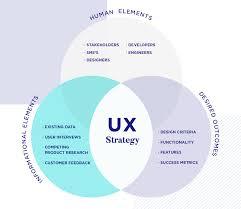What if the success of the world’s biggest tech giants wasn’t just about code or capital, but something far more invisible user experience design strategy? Companies like Apple, Google, and Airbnb aren’t just engineering products. They’re architecting experiences, crafting journeys, and embedding delight in every swipe, scroll, and click. That’s their secret weapon.
And here’s the kicker: understanding why UX design strategy is important could be the single biggest shift in how your product performs.
It Starts with the First Click And the Stakes Are High
Let’s start with a simple story. You launch an app, it works flawlessly, the backend is bulletproof but your user retention is tanking. Why? Because users don’t feel guided, the interface confuses them, and they don’t “get” your product in the first 10 seconds.
That’s a UX strategy failure.
Top tech firms avoid this pitfall by making UX strategy their blueprint from day one, not a post-launch bandage.
UX Strategy Isn’t Just Wireframes It’s a Mindset
Many teams mistake UX for UI or design sprints. But UX strategy is bigger. It’s a research-driven plan that aligns user needs with business goals. It starts at the discovery phase and echoes through every decision, feature, and pixel.
It’s not about beauty. It’s about purpose. And that’s why UX design strategy is important in shaping scalable, sustainable products.
When UX Strategy Meets Business Goals: Magic Happens
Top companies use UX strategy as a growth tool. Take Spotify its UX strategy aligned product features with user listening behaviors, unlocking personalization and loyalty.
Or consider Uber the entire ride-hailing flow is engineered to reduce friction: from geo-location accuracy to intuitive booking to clear ride tracking. This clarity boosts trust and growth.
That’s not luck. That’s strategy.
The Role of Research: UX Begins Before Design
The best UX strategies begin in silence. Listening. Observing. Interviewing. Competitive analysis, user personas, customer journey mapping—these aren’t extra steps, they’re essential ingredients.
Why? Because you can’t design the right experience if you don’t deeply understand your users. That’s the soul of why UX design strategy is important.
Micro-Interactions, Macro Impact
Ever noticed the subtle haptic buzz when you like a post or the satisfying swoosh after sending an email? These micro-interactions are strategic UX in action. They signal feedback, closure, and delight.
Top tech firms use UX strategy to decide not just what to design, but how it should feel. It’s the difference between an app that functions and one that flows.
UX Strategy Reduces Risk and Saves Money
You’d think skipping UX planning speeds up time-to-market. Wrong. Rushing into design without a clear strategy leads to rework, confusion, and sometimes, total product failure.
Amazon famously tests every UX assumption from button color to text layout before scaling. Their strategy isn’t just to build it’s to validate, learn, and improve continuously.
Scaling Products? UX Strategy Keeps Everything Aligned
When products grow, complexity follows. New features, teams, stakeholders. UX strategy acts as a guiding light ensuring consistency, continuity, and clarity.
It provides frameworks that scale: from atomic design systems to standardized onboarding flows. That’s why UX design strategy is important it future-proofs growth.
The Competitive Advantage You Can’t See But Users Feel
You can copy features. You can match pricing. But you can’t easily clone user love. That comes from an experience so fluid, so satisfying, that users stick around.
UX strategy delivers intangible value frustration-free flows, emotional connection, joyful discovery. Top companies know this is their edge.
UX KPIs Are Business KPIs in Disguise
Time on task. Conversion rates. NPS scores. These are UX KPIs, but look again—they’re also indicators of business health. A great UX strategy moves the needle on what matters: customer retention, acquisition cost, and brand equity.
Tech leaders measure UX like they do revenue because it is revenue.
Why Small Teams Need UX Strategy Even More
Think UX strategy is just for giants? Think again. For startups and small teams, every click matters. Every churned user stings. UX strategy helps focus limited resources on what users truly value.
It’s your roadmap when you can’t afford to guess.
FAQs
What is UX design strategy?
UX design strategy is a research-driven approach to designing products that align user needs with business goals. It guides every phase from discovery to delivery.
Why UX design strategy is important for startups?
Startups benefit by minimizing costly mistakes, focusing on what users need, and validating features before scaling. It leads to better retention and faster product-market fit.
How is UX strategy different from UX design?
UX strategy is the blueprint; UX design is the execution. Strategy involves planning, research, and alignment. Design involves visuals, interactions, and interface.
Can UX strategy improve ROI?
Absolutely. UX strategy increases conversion, reduces churn, and lowers development rework. All of these directly impact ROI.
What tools are used in UX design strategy?
Tools include user personas, journey maps, competitive analysis, usability testing platforms (like Maze or Hotjar), and frameworks like Design Thinking or Lean UX.
Do all tech companies use UX strategy?
Most successful ones do. Companies like Apple, Airbnb, and Google embed UX strategy into their culture because they understand that experience is everything.
Conclusion: Design Without Strategy Is Just Decoration
In a saturated digital world, the products that win aren’t just usable they’re unforgettable. And unforgettable doesn’t happen by accident. It’s engineered through empathy, validation, and intentionality.

